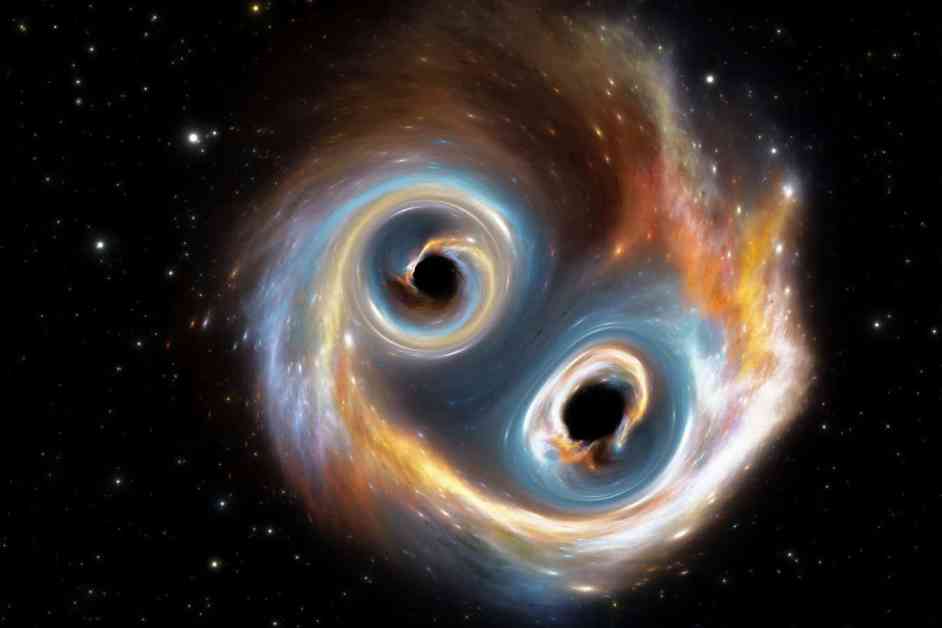Supermassive black holes are a fascinating phenomenon in space, but the process of how they merge has puzzled astrophysicists for years. Known as the final parsec problem, the mystery lies in how these enormous black holes get close enough to merge. However, a new theory suggests that dark matter, an exotic form of matter that does not emit light or energy, may hold the key to understanding this cosmic puzzle.
When two galaxies collide, their supermassive black holes at the center start to orbit each other. This gravitational dance causes them to interact with nearby matter, flinging it away and creating friction. Over millions of years, this friction slows down the black holes, bringing them closer together.
The challenge arises when these black holes reach a distance of about a parsec (3.26 light-years) apart. At this point, other forces come into play that prevent them from merging. This is where dark matter may play a crucial role. Dark matter, which makes up about 27% of the universe, is thought to interact with gravity but not with electromagnetic forces. This means it could exert a gravitational pull on the black holes, helping them overcome the final parsec problem and merge.
Understanding how supermassive black holes merge is not just a matter of curiosity. These mergers play a significant role in shaping galaxies and the universe as a whole. When black holes merge, they release energy in the form of gravitational waves, ripples in spacetime that can be detected by instruments on Earth. By studying these mergers, scientists can learn more about the nature of black holes, the properties of dark matter, and the evolution of galaxies.
The discovery of a possible connection between dark matter and the final parsec problem opens up new avenues for research in astrophysics. By exploring the role of dark matter in the process of black hole mergers, scientists may gain valuable insights into the nature of the universe and the forces that govern its workings.
While there is still much to learn and investigate, the potential link between dark matter and supermassive black hole mergers offers a tantalizing glimpse into the mysteries of the cosmos. As researchers continue to unravel the secrets of the universe, new discoveries and revelations are sure to follow, shedding light on the complex and awe-inspiring nature of the cosmos.












